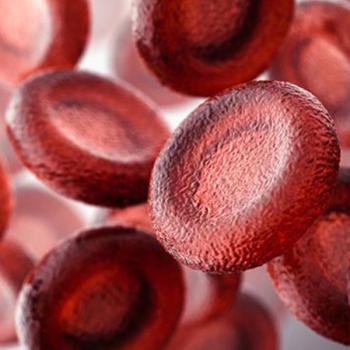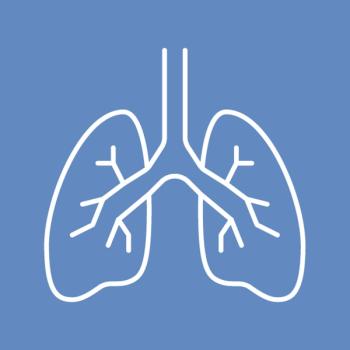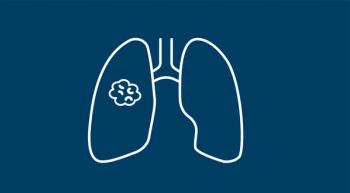
An observational study found IHC may serve as a biomarker for early detection of TP53‐mutant MDS or AML and prediction of TP53 allelic state.

An observational study found IHC may serve as a biomarker for early detection of TP53‐mutant MDS or AML and prediction of TP53 allelic state.

Oncology nurses can ensure patients with non–small cell lung cancer receive the optimal treatment quickly by understanding comprehensive genomic profiling.

Oncology nurses “play a pivotal role in guiding patients” through the genetic testing process, an expert explained.

Oncology nurses play a crucial role in educating patients about the significance of liquid biopsy in diagnosis and its use in evaluating resistance.

Genetic testing offers potential benefits after a cancer diagnosis by potentially reducing the risk for cancer in families with hereditary cancer syndromes and managing treatment.

Genetic testing decisions in patients with cancer may be affected by significant out-of-pocket costs.

Beth Sandy, MSN, CRNP, and Tajuana Bradley, MSN, APRN-BC, discuss the importance of molecular testing in non–small cell lung cancer.

Cheryl VerStrate, DNP, AGPCNP-BC, OCN, discusses why nurses should be prepared to discuss direct-to-consumer genomic testing with their patients.

Cheryl VerStrate, DNP, AGPCNP-BC, OCN, explains the pitfalls with at-home genomic tests and why nurses must be ready to talk to their patients about genetic counseling.

Oncology nurses make the case for nurse intervention with direct-to-consumer genomic testing.

Julie C. Martin DNP, AOCN, FNP-BC, discusses best practices to approaching conversations on clinically actionable genomic results with patients.

Findings from the TAPESTRY trial showed that approximately 40% of patients with genetic conditions may be missed by current NCCN guidelines.

Precision medicine is a term that has been in our oncology language for years, but changes are occurring quickly. As oncology nurses, we need to learn about genomics and biomarkers and what precision medicine means for patients’ outcomes.

Kristin Daly, MSN, ANP-BC, AOCNP, discusses pathogenic variant testing and what it means for oncology nurses.

Kristin M. Daly, MSN, ANP-BC, AOCNP, highlights the difference between somatic and germline variants.

Patients with breast cancer who carry BRCA1, BRCA2, CHEK2, or PALB2 germline pathogenic variants may be at a greater risk for contralateral breast cancer and may benefit from enhanced surveillance and risk-reduction strategies.

Both the gastric and breast cancer HER2 scoring algorithms may be useful in determining which patients with metastatic colorectal cancer may derive benefit with tucatinib/ trastuzumab.

A quality improvement project improved the time to molecular testing for patients with newly diagnosed, metastatic non–small cell lung cancer.

Derazantinib, an FGFR inhibitor, was associated with a median progression-free survival (PFS) of 7.8 months in patients with FGFR2-positive intrahepatic cholangiocarcinoma.

The median radiographic progression-free survival (rPFS) was 11.2 months among patients with castration-resistant prostate cancer who received rucaparib. In the control arm, median rPFS was 6.4 months.

Kristin Daly, MSN, ANP-BC, AOCNP, discusses the clinical significance of tumor variants and how they are changing the direction of cancer care.

The growing availability of biomarkers has led to the advent of more targeted therapies such as the antibody-drug conjugates (ADCs) fam-trastuzumab deruxtecan-nxki, ado-trastuzumab emtansine, and sacituzumab govitecan-hziy.

The FDA has approved trastuzumab deruxtecan for patients with HER2-mutated non–small cell lung cancer after the DESTINY-Lung02 results demonstrated a 57% overall response rate with the agent. The drug comes with warning for interstitial lung disease, neutropenia, and left ventricular dysfunction.

The FDA has granted capmatinib regular approval for patients with metastatic non–small cell lung cancer (NSCLC) whose tumors have a mutation leading to MET exon 14 skipping. The drug comes with warning for pneumonitis, hepatotoxicity, and pancreatic toxicity.

Beth Sandy, MSN, CRNP, discusses the application of 2 FDA approved drugs for patients with non–small cell lung cancer and an exon 20 insertion mutation.

At the 6th Annual SONO meeting, Beth Sandy, MSN, CRNP, reviewed available treatment options for patients with identified driver mutations in non–small cell lung cancer.

Paula Anastasia, RN, MN, AOCN, discusses the value of germline testing and the role of maintenance PARP inhibitor therapy in optimized ovarian cancer treatment.

Beth Sandy, MSN, CRNP, discusses some of the challenges that may be associated with molecular testing, and how oncology nurses can help play a role in ensuring that the reports are received.

In early-stage cancers, ctDNA has a role in screening, neoadjuvant monitoring, identification of molecular residual disease (MRD), molecular relapse monitoring, and early assessment of treatment response.

Patients with 4-1BB or LAG-3–expressing T cells at baseline, or a high proportion of PD-L1–expressing myeloid cells and plasmacytoid dendritic cells during boost cycles, may be more likely to benefit from the combination of nivolumab and ipilimumab.